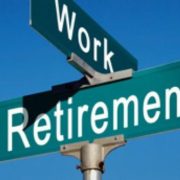Keeping up with Ageing
adidas yeezy boost 750 triple black
Thanks in part to the Baby Boomer generation and their fixation on living longer and maintaining their health, we can all anticipate longer lifespans.
The German demographer James Vaupel estimates that the average girl born now in Western societies will live to 100. Many of today’s boys, he says, will also make it to a century.
Our lives have been improved by technology, advances in health and the many measures at our disposal to prolong our productive years.
But quality of life is the real issue and the pressures of providing for everyone, with the cost of healthcare, aged care and nursing homes, senility and other diseases and their impact on families – have made ageing a key social issue.
100 years ago, men could expect to live to about 55, and women 58. Today, the Australian Bureau of Statistics estimates, men can hope to hit 79 and women, about 83. The ABS estimates that there are currently almost three million Australians aged 65 and over, and close to 4 million baby boomers will join them in the next 15 years.
This is all great news for our nearest and dearest, but who will fund the retirement, healthcare, facilities and infrastructure required for this new era of the aged?
In 2006, there were 14 million Australians aged 15 to 64, typically referred to as ‘of working age’, and 2.7 million over 65. The ratio of workers to retirees was roughly five to one. By 2056, on conservative assumptions, the bureau projects that those of working age will grow by half, to 21.5 million, but the number of us 65 and over will treble to 8.1 million. The ratio of workers to retirees would then be about three to one.
How can the kids and teens of today be expected to finance so many retirees? Especially when those aged 85 and over, with the most chronic needs for care, are projected to increase from 322,000 to 1.72 million?
Treasury and the Reserve Bank warn we are facing a shortage of workers. Yet as the first baby boomers turn 65, that is still our pension age for men, the same as 100 years ago. Women can take the pension at 64. We can take our super payouts tax-free at 60, or with low taxes at 55.
Confronting ageism in the workplace, encouraging seniors to contribute later in life, rolling back the age at which people can take their super, and investing in aged care as well as in research into the causes of disease and disability in older age are some measure we can take to tackle the challenges ahead.
But of paramount importance is preparation. Each and every one of us should be mindful that we stand a chance of living much longer lives than our parents, and we need to ensure our lifestyles, ambitions, plans and dreams correspond with our financial means.
It’s never too early, or too late, to put the structures in place that will enable you and your family to enjoy the benefits of long, happy, healthy lives.
Source: Australian Bureau Statistics









